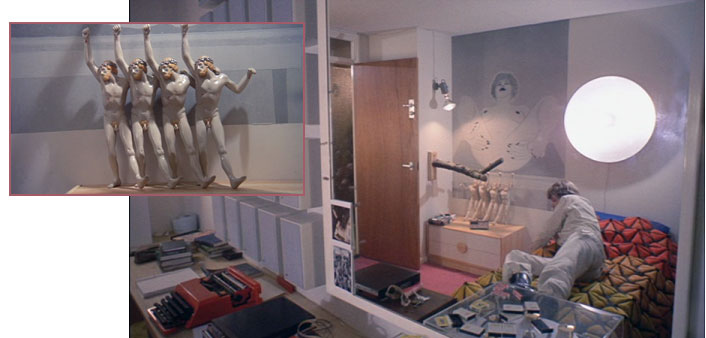

Above them, stuffed birds stand against panels inlaid with square polished stone samples, doubtless marbles and jaspers or fitted with pigeonhole compartments for specimens. At the left, the room is fitted out like a studiolo with a range of built-in cabinets whose fronts can be unlocked and let down to reveal intricately fitted nests of pigeonholes forming architectural units, filled with small mineral specimens. Examples of corals stand on the bookcases. Every surface of the vaulted ceiling is occupied with preserved fishes, stuffed mammals and curious shells, with a stuffed crocodile suspended in the centre. Some of the volumes doubtless represent his herbarium. It serves to authenticate its author's credibility as a source of natural history information, in showing his open bookcases at the right, in which many volumes are stored lying down and stacked, in the medieval fashion, or with their spines upward, to protect the pages from dust. The earliest pictorial record of a natural history cabinet is the engraving in Ferrante Imperato's Dell'Historia Naturale (Naples 1599) ( illustration). This love was often exploited by eighteenth-century natural philosophers to secure the attention of their audience during their exhibitions.įold-out engraving from Ferrante Imperato's Dell'Historia Naturale (Naples 1599), the earliest illustration of a natural history cabinet To c. This was not unusual, as the Royal Society had an earlier history of a love of the marvellous. However purely educational or investigative these exhibitions may sound, it is important to note that the Fellows in this period supported the idea of "learned entertainment," or the alignment of learning with entertainment.

In addition to cabinets of curiosity serving as an establisher of socioeconomic status for its curator, these cabinets served as entertainment, as particularly illustrated by the proceedings of the Royal Society, whose early meetings were often a sort of open floor to any Fellow to exhibit the findings his curiosities led him to. Evans notes, there could be "the princely cabinet, serving a largely representational function, and dominated by aesthetic concerns and a marked predilection for the exotic," or the less grandiose, "the more modest collection of the humanist scholar or virtuoso, which served more practical and scientific purposes." Evans goes on to explain that "no clear distinction existed between the two categories: all collecting was marked by curiosity, shading into credulity, and by some sort of universal underlying design". There are said to be two main types of cabinets. A corner of a cabinet, painted by Frans II Francken in 1636 reveals the range of connoisseurship of a Baroque-era virtuosoĬabinets of curiosities served not only as collections to reflect the particular curiosities of their curators but as social devices to establish and uphold rank in society.


 0 kommentar(er)
0 kommentar(er)
